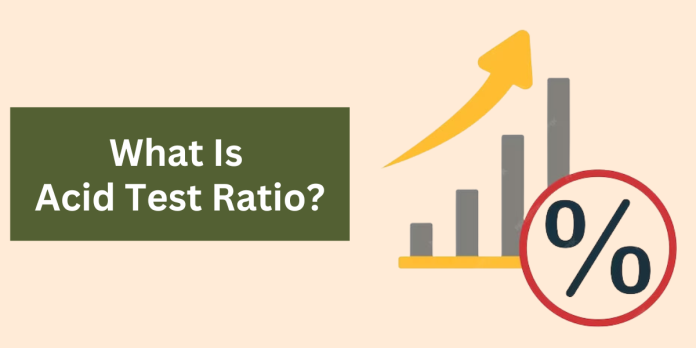Acid Test Ratio popularly known as quick ratio, is a crucial financial metric used to evaluate a company’s ability to meet its short-term obligations without excluding the sale of inventory. It offers a more stringent measure of liquidity, focusing on assets that can be easily converted into cash. The formula for calculating the Acid Test Ratio involves taking the sum of highly liquid assets, which typically include cash, cash equivalents, short-term investments, and accounts receivable, and dividing it by the company’s current liabilities. This ratio provides insight into a company’s financial health by focusing on assets that can be readily transformed into cash, reducing reliance on less liquid assets like inventory.
Acid Test Ratio is calculated as:
Acid Test Ratio = (Cash + Cash Equivalents + Short-term Investments + Accounts Receivable) / Current Liabilities
A Quick Ratio of 1 or higher is generally considered favourable, indicating that the company possesses sufficient liquidity to cover its short-term obligations without relying on inventory sales.
The acid-test ratio is a more conservative metric than the current ratio because it ignores assets such as inventory, which may be difficult to liquidate quickly.
It is a useful metric for determining a company’s short-term financial health
The acid-test ratio may be unreliable if there are delays in collecting accounts receivable or if current liabilities are due but do not require immediate payment
It is limited to use for comparing similar companies within an industry
Read: How to Read Annual Report of Any Company?
Example
Three companies have the following current assets and current liabilities through which we will calculate the acid-test ratio.
| Particulars | A Ltd. | B Ltd. | C Ltd. |
| Cash and Cash Equivalent | 45423.00 | 24546.00 | 56215.00 |
| Short Term Investment | 15242.00 | 10241.00 | 12542.00 |
| Receivable | 4,220.00 | 3,542.00 | 5,226.00 |
| Inventories | 2,000.00 | 12,254.00 | 5,045.00 |
| Other Current Assets | 8,900.00 | 4,515.00 | 7,540.00 |
| Total Assets | 74,052.00 | 1,04,545.00 | 86,250.00 |
| Total Liabilities | 42,554.00 | 46,521.00 | 25,554.00 |
| Acid-Test Ratio | 1.69 | 0.66 | 2.99 |
In the above example, A Ltd. has an acid-test ratio of 1.69, indicating that it has sufficient liquid assets to cover its short-term liabilities. C Ltd. has the highest acid-test ratio at 2.99, which suggests a robust ability to meet short-term obligations without relying on inventory. On the other hand, B Ltd. has a lower acid-test ratio of 0.66, signifying potential liquidity challenges as it may struggle to cover its immediate liabilities without converting a significant portion of its inventory into cash. A higher acid-test ratio is generally considered more favourable as it reflects stronger liquidity and the ability to weather unexpected financial challenges.


